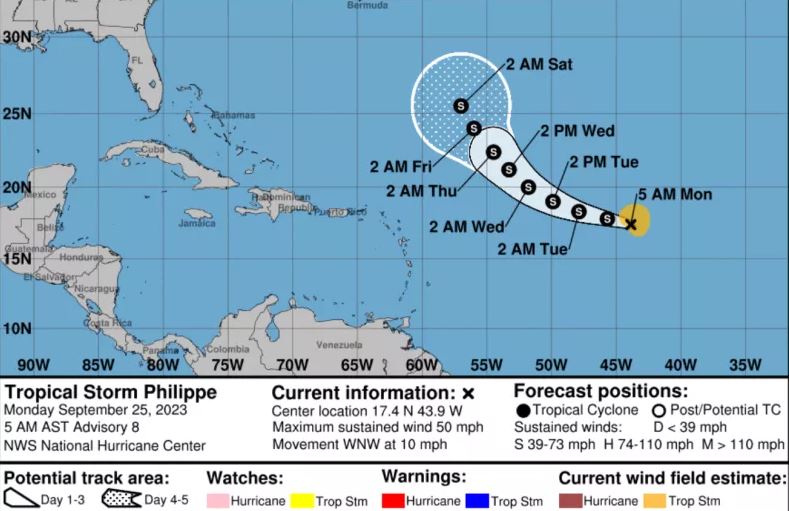Tropical Storm Philippe and the 2023 Atlantic Hurricane Season

As the September 30 funding deadline approaches and concerns mount over a potential government shutdown, Americans are left anxious about the potential financial hardships and impacts on essential services. (Photo: newsweek)
Tracking Tropical Storm Philippe and Its Lingering Impact
According to usatoday.com, Tropical Storm Philippe is one of several weather systems currently being monitored by the National Hurricane Center. Fortunately, none of these systems including Tropical Storm Philippe are expected to pose an immediate threat to the United States or other land areas.
Despite this, the 2023 Atlantic hurricane season is highly active, with 17 named storms recorded so far tying with the third-most Atlantic named storms through September 23 in recorded history.
While the remnants of Tropical Storm Philippe continued to bring rain to the Northeast, Tropical Storm Philippe’s effects were still being felt as it slowly moved offshore. Coastal areas in the mid-Atlantic and southern New England experienced gusty winds and heavy rainfall with coastal flood watches and advisories remaining in effect.
READ ALSO: Boston’s Worst Neighborhoods – The Other Side of Massachusetts’s Largest City
Monitoring Other Weather Systems as Philippe Heads West
Tropical Storm Philippe, the 17th named storm of the Atlantic hurricane season, was located far out in the open Atlantic Ocean. It posed no immediate threat to land areas and had maximum wind speeds of 45 mph, moving west at 15 mph.
In addition to Tropical Storm Philippe, the National Hurricane Center is monitoring two other weather systems. One, located in the Gulf of Mexico, is not expected to strengthen or develop further. The other system, situated far out in the Atlantic Ocean beyond Tropical Storm Philippe, shows signs of potential strengthening and is forecast to become a tropical depression in the coming days. If it evolves into a tropical storm, it will be named Rina.
READ ALSO: Oil Prices Rose Sharply on Monday Amidst Supply Tightening and Rate Hike Concerns









